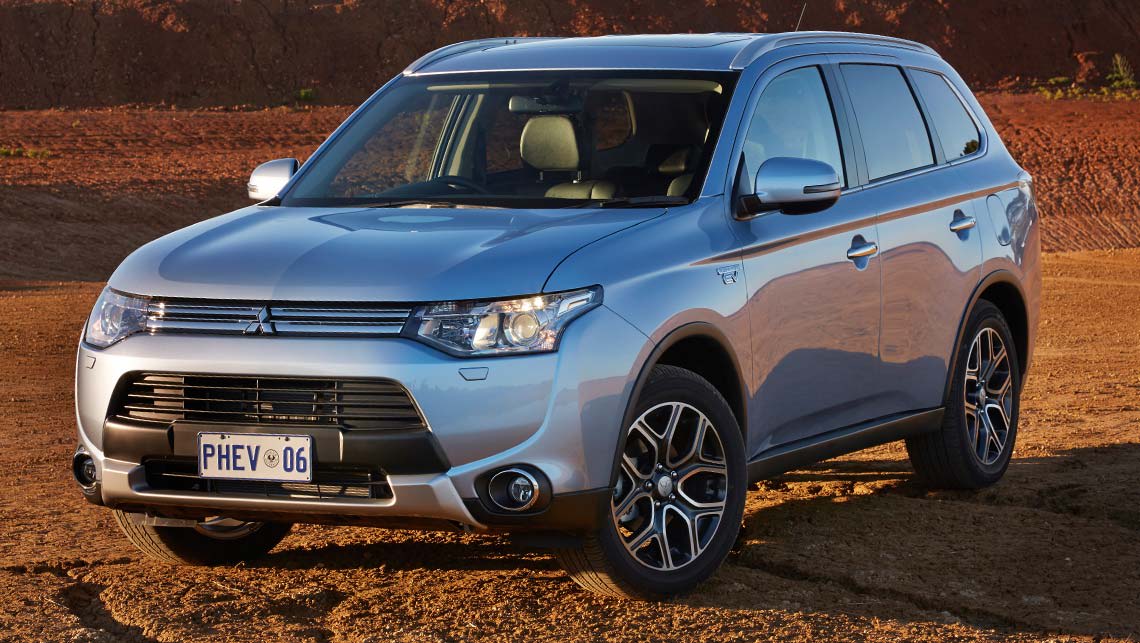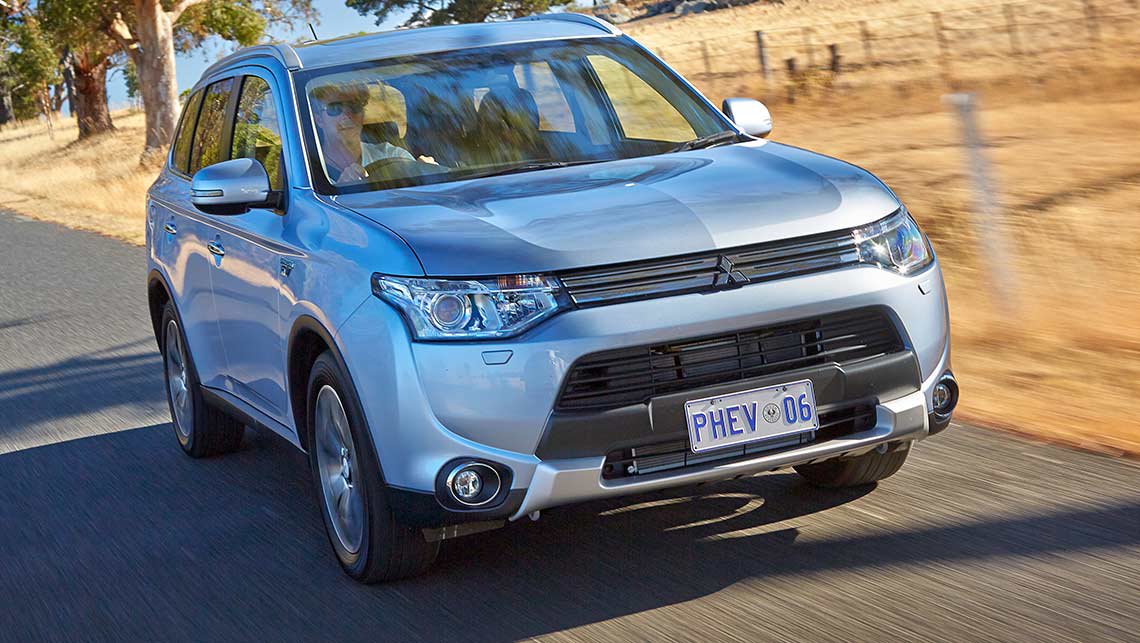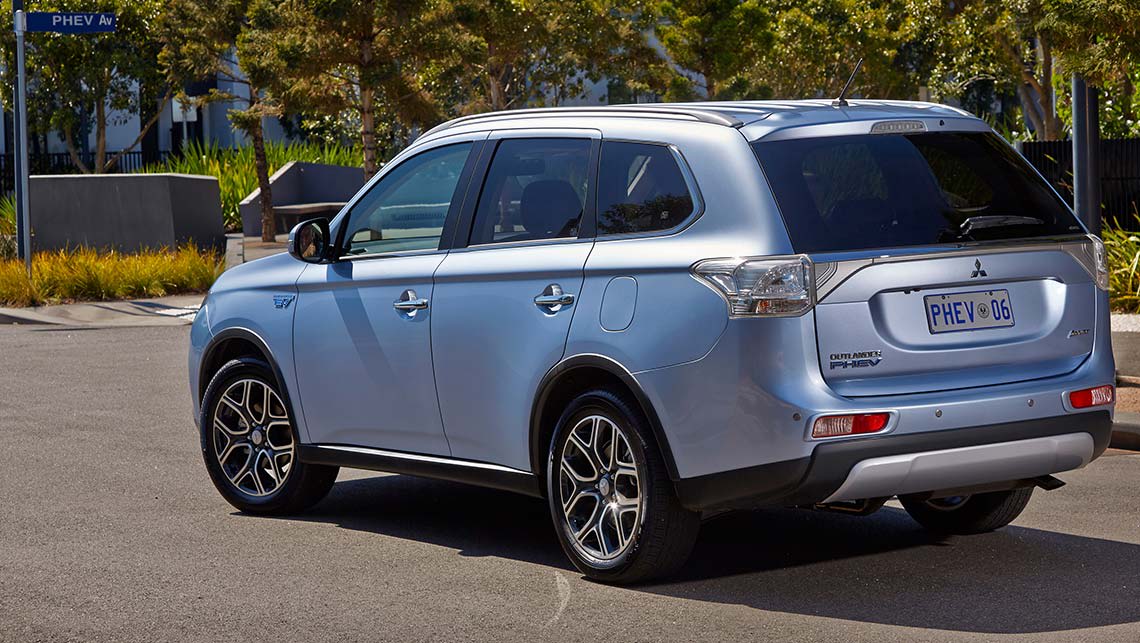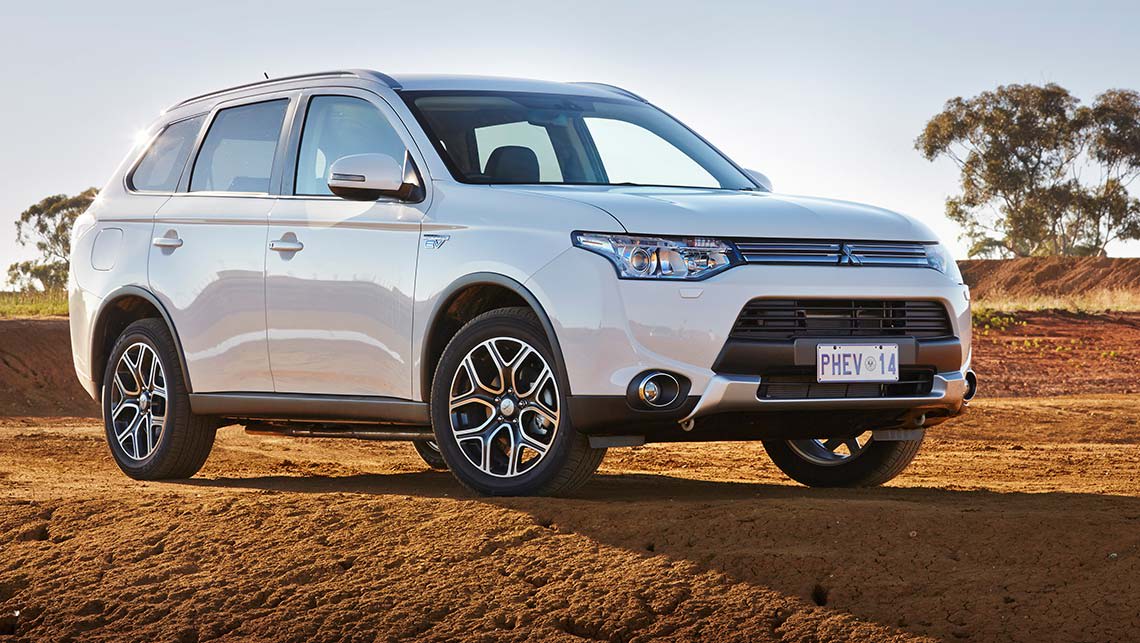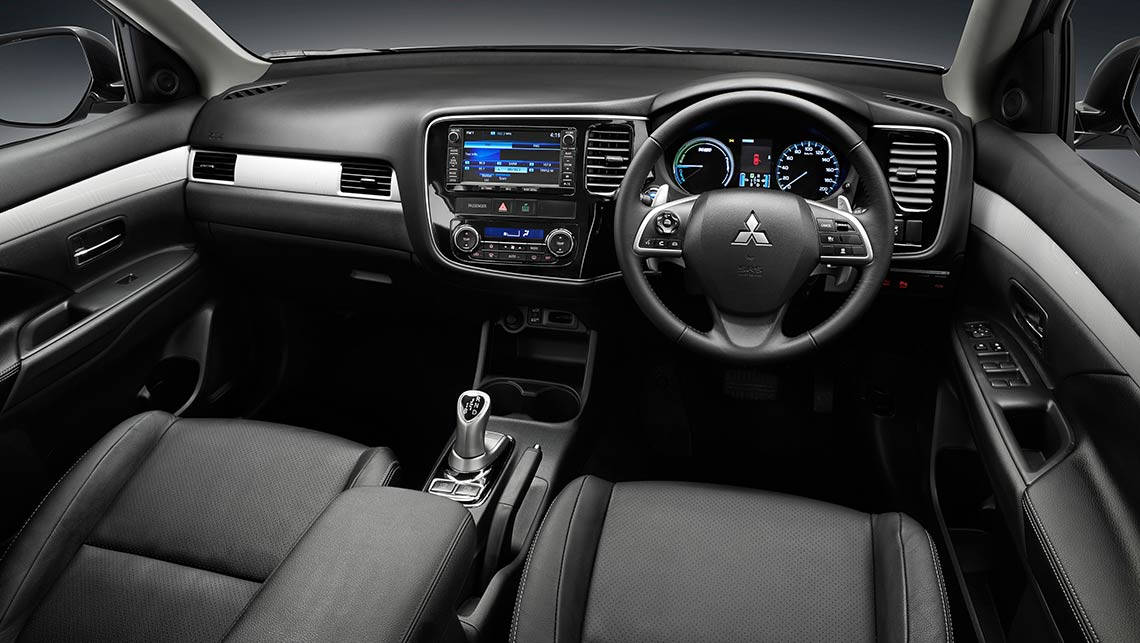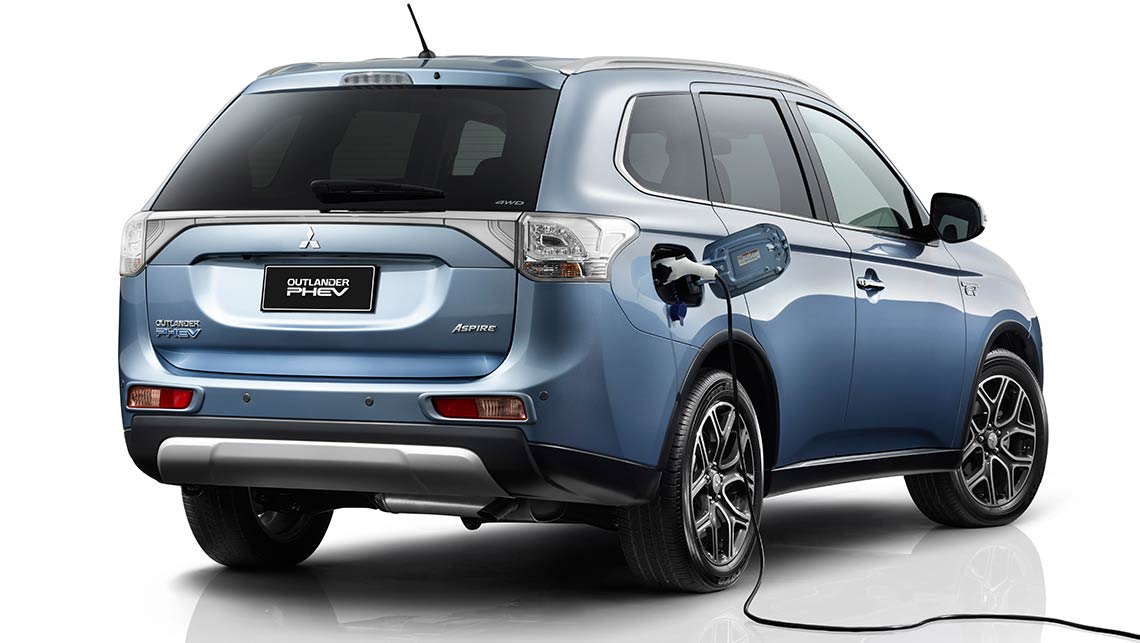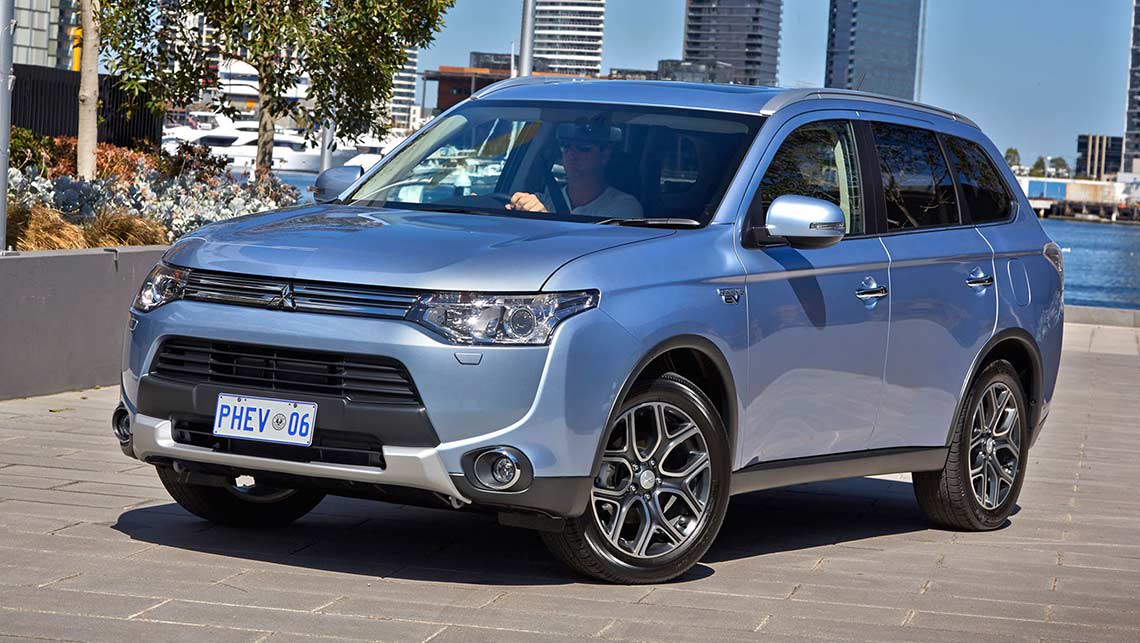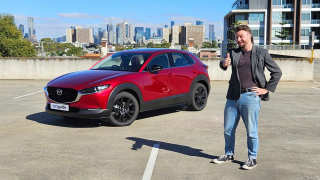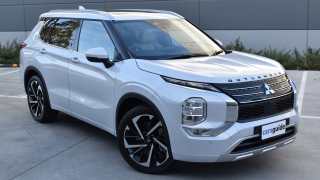
Mitsubishi Outlander Plug-in Hybrid 2014 Review
- Mitsubishi Outlander
- Mitsubishi Outlander 2014
- Mitsubishi Outlander Reviews
- Mitsubishi Reviews
- Mitsubishi SUV Range
- SUV
- Mitsubishi
- EV
- Family Cars
- Green Cars
- 7 seater
At the advent of hybrid petrol / electric cars the makers did their best to make their vehicles other worldly, standing out like flying saucers at a vicarage tea party. For example, futuristic fashion had its way with the Honda Insight and Toyota Prius.
Since then, hybrids have repeatedly been absorbed into their respective model line-ups, for example, the Honda Civic, Toyota Camry and assorted Lexuses, with little to distinguish on the outside them from their more conventional siblings.
Now, Mitsubishi has come up with the world's first mass production plug-in hybrid SUV, which apart from the odd identification logo, could be any of the Outlander fraternity - which it's definitely is not.
The Outlander PHEV, for Plug-in Hybrid Electric Vehicle, runs on electrical power with the back-up of a petrol engine which is used to charge the battery or add extra performance to the vehicle.
The technically sophisticated SUV comes in two highly specified variants – Outlander PHEV LS selling from $47,490 or top-notch Outlander PHEV Aspire, $52,490, plus on-road costs. Both are covered by Mitsubishi's five-year 100,000 kilometre warranty and capped price servicing.
ENGINES / TRANSMISSIONS
The Outlander PHEV makes use of two 60 kW electric motors, front and rear, a 12 kWh lithium ion drive battery, 70 kW output generator, lightweight front transaxle assembly and an efficient 87 kW 2.0-litre four-cylinder petrol engine, the last used to recharge the drive battery and supplement power in more testing driving conditions.
The PHEV makes the best use of both systems by delivering power in three modes - EV Drive Mode, Series and Parallel Modes. These operate without any intervention from the driver.
EV mode is all electric driving, using only electric power from the drive battery. Carbon dioxide emissions and petrol consumption are zero at speeds up to 120 km/h.
In Series Mode, the petrol engine is used to recharge the battery which supplies the electric motors to drive the wheels. The system switches to Series mode when the battery charge falls below a predetermined level or more performance is required, such as during overtaking or on a steep climb.
The switch to Parallel Mode occurs when the vehicle reaches highway speeds, or extra power is required. In Parallel Mode, the petrol engine provides drive to the front wheels with help from the electric motors.
The electric motors also manage Outlander's dynamic stability, the integrated S-AWC system ensuring it has the same high levels of grip and roadholding as a conventional four-wheel drive.
Plug-in charging requires a 15 Amp power outlet (standard plugs are 10 Amp), so this five-hour operation is not always an option.
DESIGN
The PHEV follows the rest of the mid-sized Outlander SUV range, taking on a sportier front and rear design to give it a stronger, more dynamic street presence. The interior repeats family characteristics, with the selector lever, power gauge and displays showing its unique identity.
With the rear seat backs folded, cargo space extends to 1741 mm in length, a completely flat 463 litres of luggage room. An underfloor compartment provides space for the charging cable and other small items.
INFOTAINMENT
The conventional Outlander's multi-information system gains a PHEV-dedicated menu which provides access to functions and displays for electric vehicle usage. This includes a 7-inch display screen with a navigation system that includes a charging station search, charging cost, scheduled charging and air cooling and remaining cruising area display.
A PHEV Driving Information Display incorporates an energy flow display, energy monitoring and ECO system information.
SAFETY
Silence is far from golden when it comes to vehicles and pedestrians coming together. The boffins put their heads together and have added noise to the almost silent electric motors, stopping the PHEV becoming the stealth bomber of the street.
More conventional safety measures include a plethora of airbags including front driver and passenger airbags, side, curtain and knee bags, the Super All-Wheel Control system with Active Yaw and Stability Control, reverse camera and rear parking sensors.
The upper echelon Outlander PHEV Aspire also has Mitsubishi's advanced active safety technology system, e-Assist, comprising Adaptive Cruise Control and Forward Collision Mitigation. It all adds up to a top five-star ANCAP safety rating.
DRIVING
Provided the vehicle is kept to journeys within about 52 kilometres between plug-in charges, there never need to be any use of the petrol engine.
Twist this, push that, pull the other . . . and that's not only steering, accelerating and putting on the handbrake. Battery and fuel status are indicated side by side on the dashboard multi-information display and the petrol engine can be manually started to recharge a low battery by pressing a button on the centre console.
The electric motors act as generators during deceleration and recharge the drive battery when the driver releases the accelerator or when the brake pedal is applied. The degree of energy recovered can be controlled using the gear lever or paddle shifts on the steering wheel.
The driver can increase energy uptake by moving the lever from 'D' to 'B' where two levels - B3 or B5 - are available. Alternatively, by using the steering wheel paddles, the driver can adjust the level of regenerative braking to any of the six levels, from B0 to B5.
$7,888 - $25,990
Based on 104 car listings in the last 6 months
There is no argument with the PHEV doing its best to reduce fuel consumption and cut pollution. But there is a tinge of sadness to all the accompanying system connectivity, both internal and external, by leaving the person behind the wheel less of a driver and more of a machine operator.
2014 Mitsubishi Outlander PHEV
Price: from $47,490
Engine: Dual 60kW electric motors, 87kW 2.0-litre petrol engine
Transmission: Single fixed ratio for all three motors
Thirst: 1.9L/100km
2014 Mitsubishi Outlander PHEV list pricing
Outlander PHEV -$47,490
Outlander PHEV Aspire - $52,490
Likes
Dislikes
$7,888 - $25,990
Based on 104 car listings in the last 6 months



